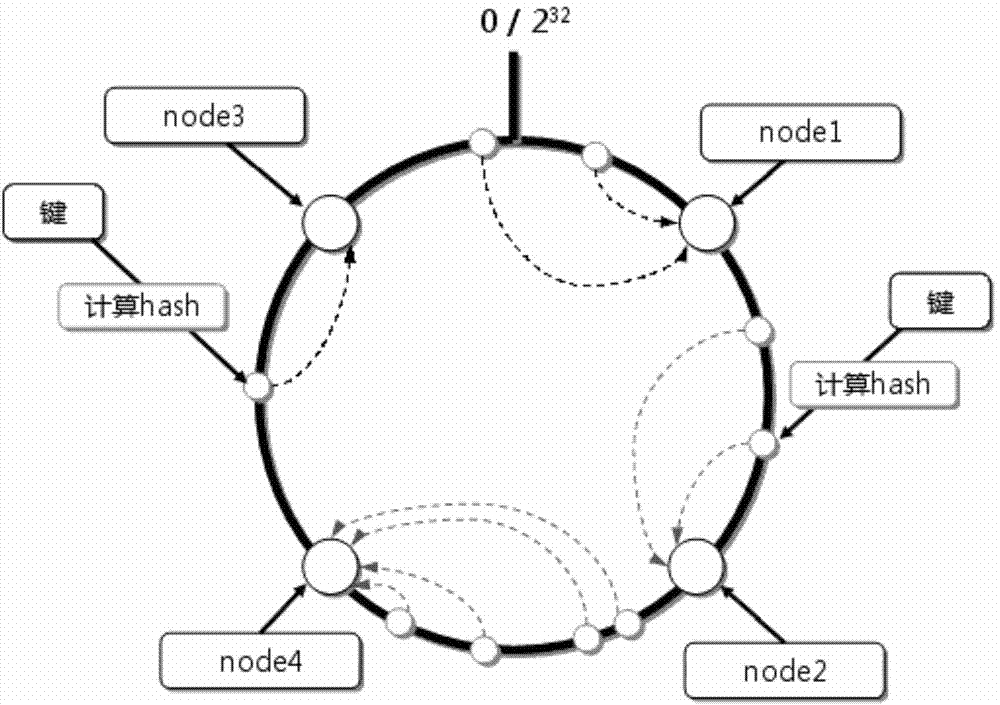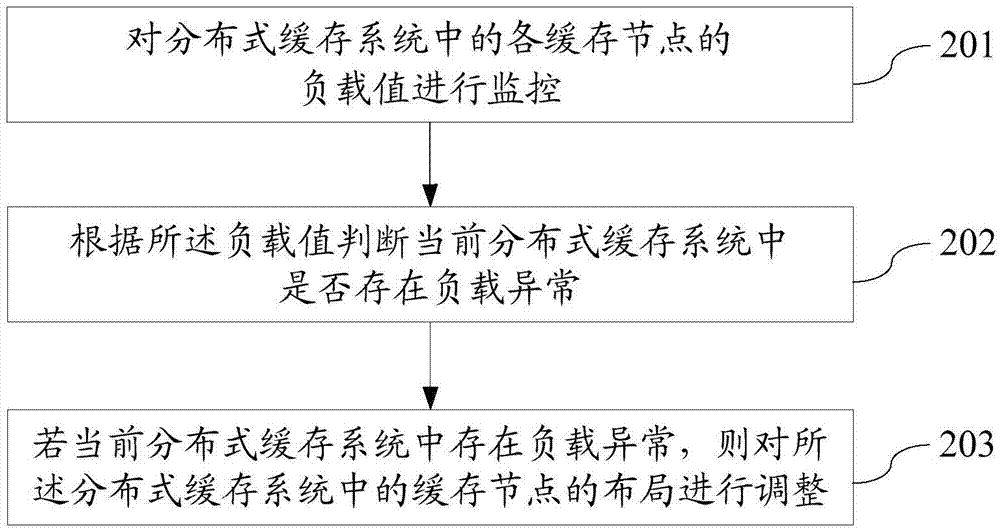Method, device and system of scheduling of distributed cache resources
A distributed cache and resource scheduling technology, applied in the field of communication, can solve problems such as increasing the burden on the cache client, high load, and large amount of calculation on the cache client
- Summary
- Abstract
- Description
- Claims
- Application Information
AI Technical Summary
Problems solved by technology
Method used
Image
Examples
Embodiment 1
[0060] Such as figure 2 As shown, the distributed cache resource scheduling method provided in this embodiment includes the following steps:
[0061] 201. Monitor the load value of each cache node in the distributed cache system; the load value here may include but not limited to the memory occupancy rate and bandwidth occupancy rate of each cache node.
[0062] 202. Determine whether there is a load abnormality in the current distributed cache system according to the load value; the load abnormality includes uneven load, too high load, or too low load.
[0063] Generally, if in the current distributed cache system, the difference between the maximum value and the minimum value of the load values of all cache nodes exceeds a threshold (for example, 15%), it is considered that there is load imbalance in the current distributed cache system ;
[0064] If the overall load of all cache nodes is higher than the upper limit (such as 80%) or the minimum value of the load values ...
Embodiment 2
[0080] Such as Figure 4 As shown, the distributed cache resource scheduling method provided in this embodiment includes the following steps:
[0081] 401. Receive a notification message sent by the cache management device, where the message includes location information of an old cache node corresponding to a hash segment of data about to be lost on a virtual circle of the distributed cache system.
[0082] Wherein, the hash segment of the data about to be lost is a hash segment whose belonging cache node has changed after the layout of the cache nodes is adjusted on the virtual circle of the distributed cache system.
[0083] 402. When there is no data to be read by the cache client on the current cache node, access the old cache node according to the location information to acquire and save the data.
[0084] The execution subject of the above steps may be a cache node in the distributed cache system, and the cache node is a new cache node corresponding to the hash segment...
Embodiment 3
[0091] In this embodiment, a specific example will be used to further illustrate a method for implementing resource scheduling in a distributed cache system by moving the positions of cache nodes on the "circle".
[0092] First, judge whether there is uneven load in the current distributed cache system. The specific judgment method has been described above and will not be repeated here; if there is uneven load in the current distributed cache system, you can move the cache node in The layout of the cache nodes in the distributed cache system is adjusted by means of the position on the "circle".
[0093] Specifically, the process of moving the position of the cache node on the "circle", such as Image 6 shown, including:
[0094] 601. Select at least a pair of adjacent cache nodes on the "circle" with the largest load difference.
[0095] When selecting the adjacent cache nodes with the largest load gap on the "circle", the pair with the largest load gap can be selected. This...
PUM
 Login to View More
Login to View More Abstract
Description
Claims
Application Information
 Login to View More
Login to View More - R&D
- Intellectual Property
- Life Sciences
- Materials
- Tech Scout
- Unparalleled Data Quality
- Higher Quality Content
- 60% Fewer Hallucinations
Browse by: Latest US Patents, China's latest patents, Technical Efficacy Thesaurus, Application Domain, Technology Topic, Popular Technical Reports.
© 2025 PatSnap. All rights reserved.Legal|Privacy policy|Modern Slavery Act Transparency Statement|Sitemap|About US| Contact US: help@patsnap.com



